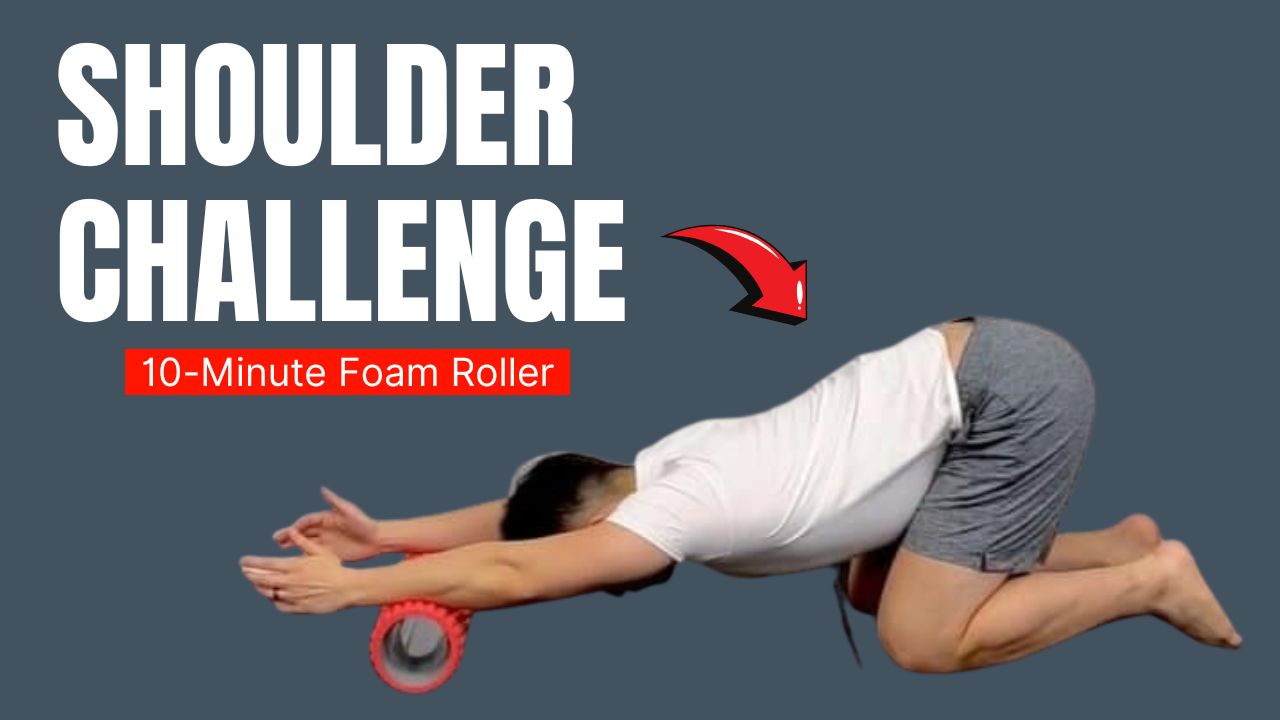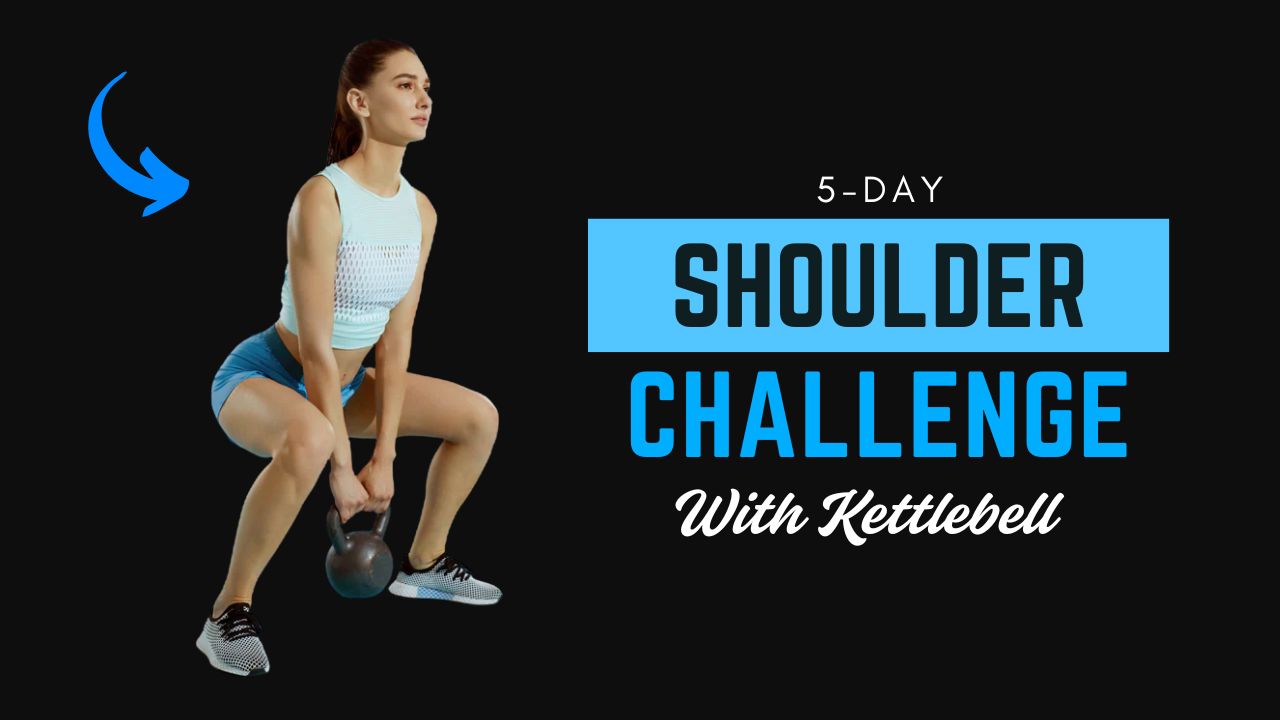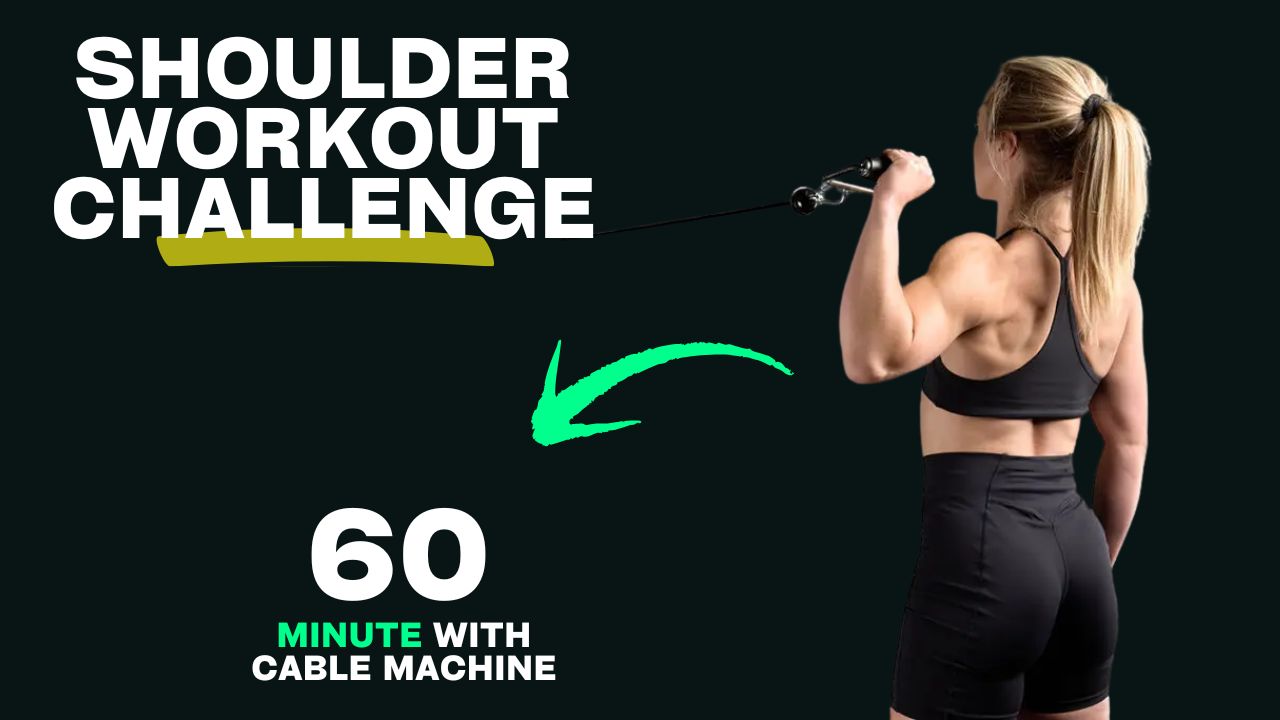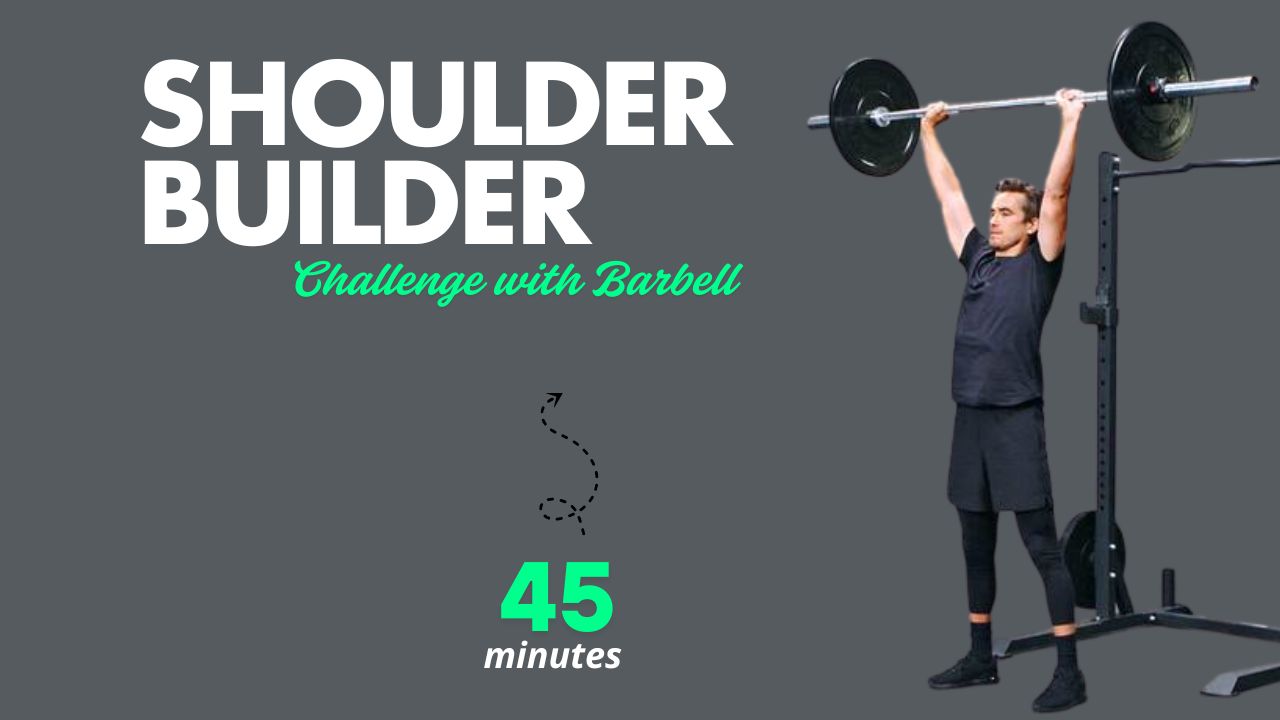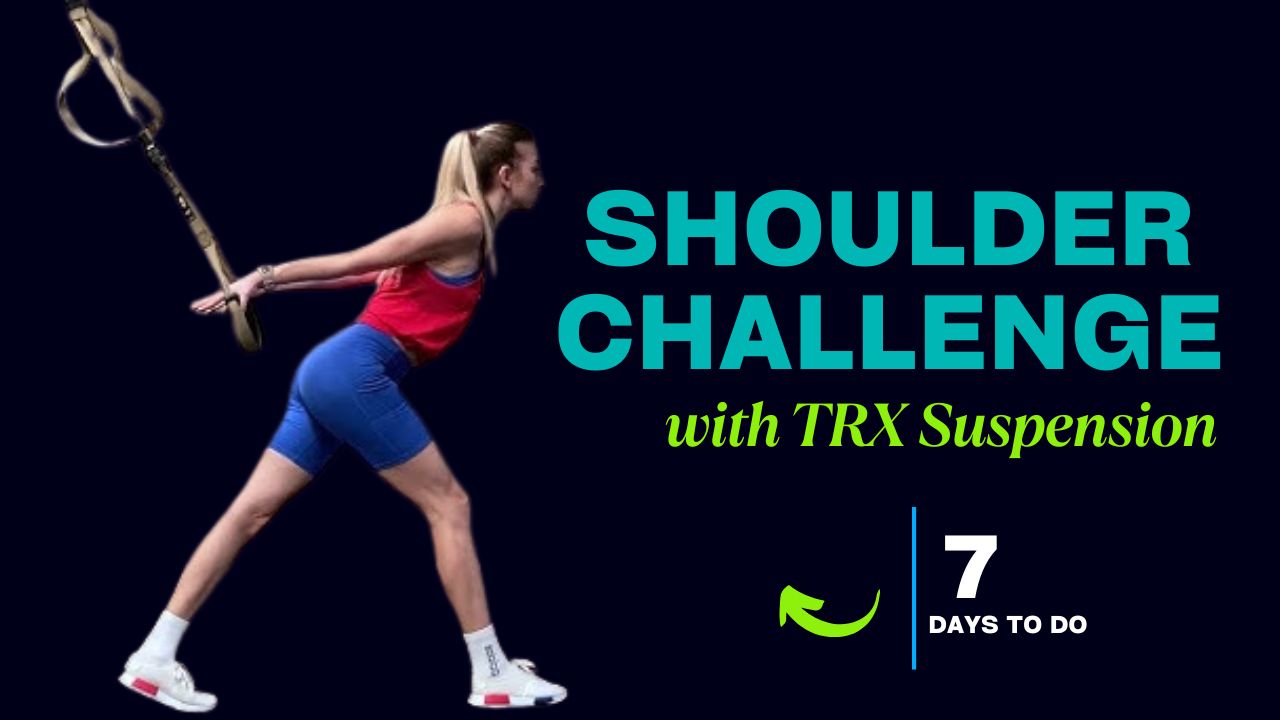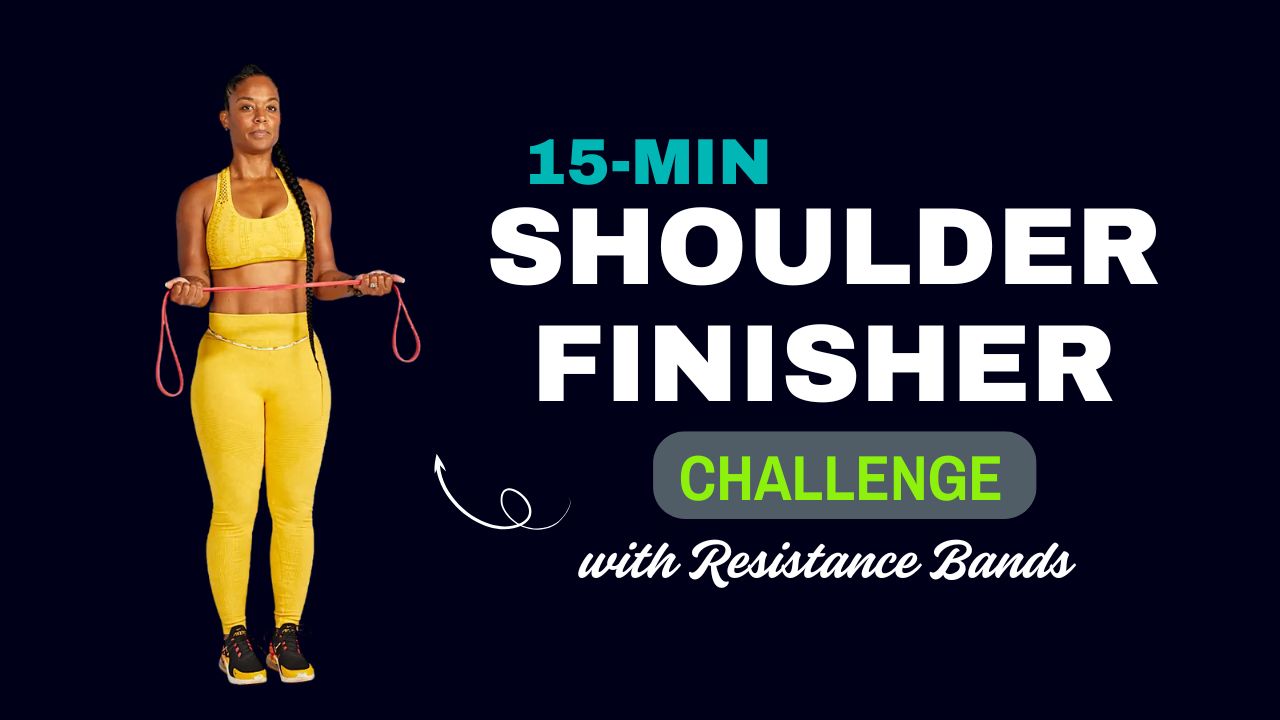Want to train your abs smarter, not harder? The cable machine might just be the secret weapon your core routine is missing.
With constant resistance throughout every movement, Hi-Lo Cable Abs exercises don’t just sculpt—they stabilize, strengthen, and protect your spine like few other tools can.
Whether you’re after shredded abs, improved posture, or a rock-solid core foundation for better lifting and athletic performance, these 15 exercises will challenge every inch of your midsection—from obliques to lower abs and everything in between.

Table of Contents
What Can Happen After 30 Days of Hi-Lo Cable Abs Exercises
| Positive Changes | Why It Happens |
|---|---|
| Stronger, More Defined Abs | Continuous resistance increases muscle engagement and hypertrophy. |
| Improved Core Stability & Balance | Exercises like Pallof Press and Cable Plank Rows enhance deep stabilizing muscles. |
| Better Posture & Spinal Support | Strengthening the core reduces slouching and supports a neutral spine. |
| More Functional Power in Sports & Lifting | Oblique and rotational work improves explosive and twisting movements. |
| Visible Midsection Toning (with proper diet) | Regular cable ab work sculpts and tightens, especially when body fat decreases. |
| Reduced Risk of Lower Back Pain | Core stabilization reduces strain on the lumbar spine during daily movement. |
| Increased Muscle Endurance | Repeated resistance training builds ab stamina and work capacity. |
| Improved Mind-Muscle Connection | Cable resistance helps isolate and “feel” the abs working more effectively. |
Also Read: 10 Lat Pulldown Exercises to Build a Bigger, Stronger Back – Fast!
Do’s and Don’ts of Hi-Lo Cable Abs Exercises
| Do’s | Don’ts |
|---|---|
| Focus on slow and controlled movement | Don’t yank or use momentum to move the weight |
| Engage your core throughout each rep | Don’t let your arms or shoulders take over the movement |
| Start with light to moderate resistance | Don’t load heavy weight right away without mastering form |
| Use full range of motion | Don’t cut your reps short or rush the movement |
| Breathe out during the contraction (crunch/twist/pull) | Don’t hold your breath while training |
| Mix high and low pulley angles for full core engagement | Don’t stick to just one movement pattern (e.g., only crunches) |
| Warm up your core and spine before starting | Don’t jump into heavy twisting or dynamic moves cold |
| Maintain proper spinal alignment and posture | Don’t arch your back or hunch forward excessively |
| Train abs 2–3x per week with rest days in between | Don’t train abs every day without recovery |
| Include anti-rotation and stability-focused cable exercises | Don’t only rely on crunch-style movements for core development |
Why Use Hi-Lo Cable Machines for Abs?
Cables provide continuous tension—unlike bodyweight or free-weight ab moves where tension may drop off at different phases.
This means greater muscle activation, especially in hard-to-hit areas like the deep transverse abdominis and obliques.
Did you know? The cable machine activates your core up to 30% more effectively than standard crunches, especially when using dynamic angles.
Equipment Needed
- A cable pulley machine (adjustable to high and low positions)
- D-handle or rope attachment
- Optional: Exercise mat
15 Hi-Lo Cable Abs Exercises
Each includes how-to, benefits, and pro tips.
1. Cable Kneeling Crunch (High Pulley)
How to:
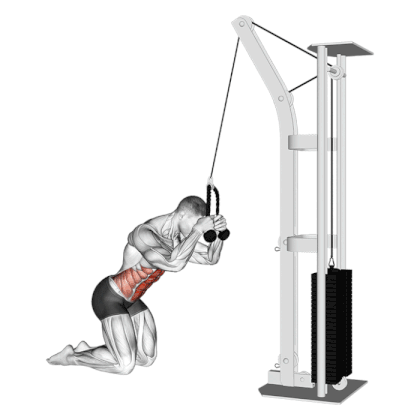
- Attach a rope to the high pulley. Kneel, grab rope handles near your ears.
- Crunch down by contracting your abs, keeping your hips stable.
- Return slowly.
Benefits:
- Targets upper and mid-abs
- Builds mind-muscle connection
Pro Tip: Keep elbows in—not flared—for full ab isolation.
Also Read: 10 Powerful Kettlebell Exercises to Strengthen Your Hamstrings
2. Standing Cable Oblique Crunch
How to:
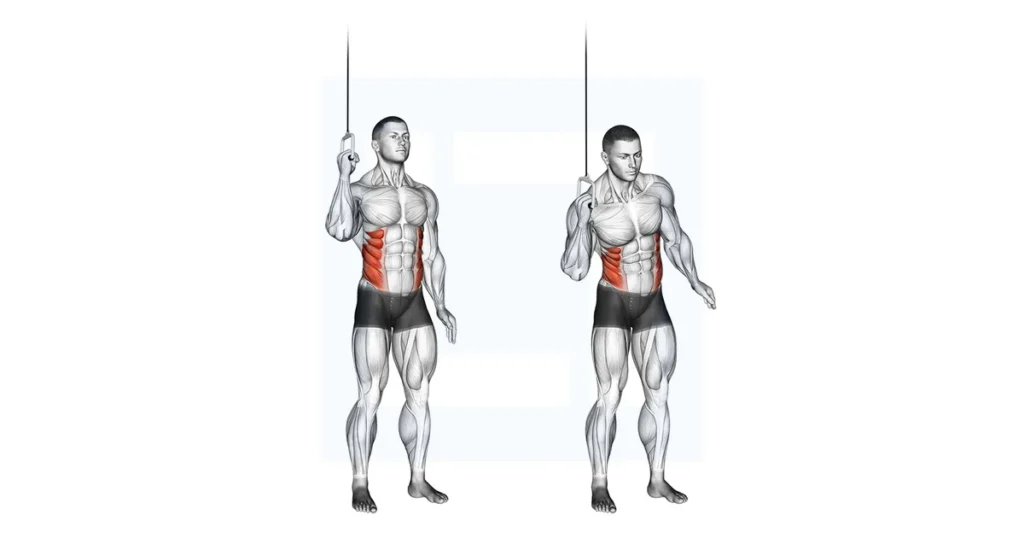
- Stand sideways to the machine with the cable at shoulder height.
- Pull the handle down while crunching your obliques sideways.
- Return with control.
Benefits:
- Tones love handles
- Improves rotational strength
3. Cable Woodchopper (High to Low)
How to:
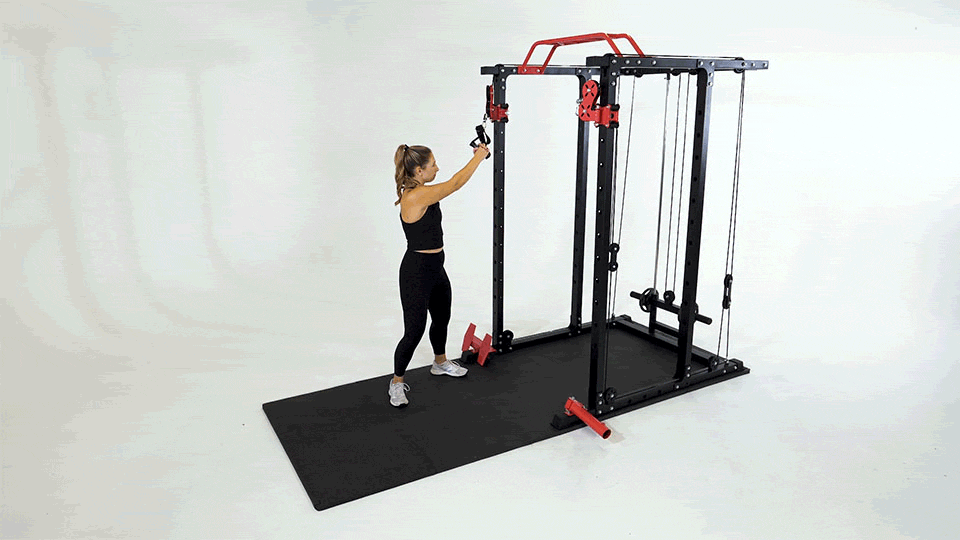
- Stand side-on with cable high.
- Pull the handle diagonally across your body to opposite knee.
- Rotate through core—not arms.
Benefits:
- Shreds obliques
- Builds rotational power
Myth Buster: Woodchoppers don’t make your waist bulky—they tighten your core and enhance athleticism.
4. Cable Reverse Crunch (Low Pulley)
How to:
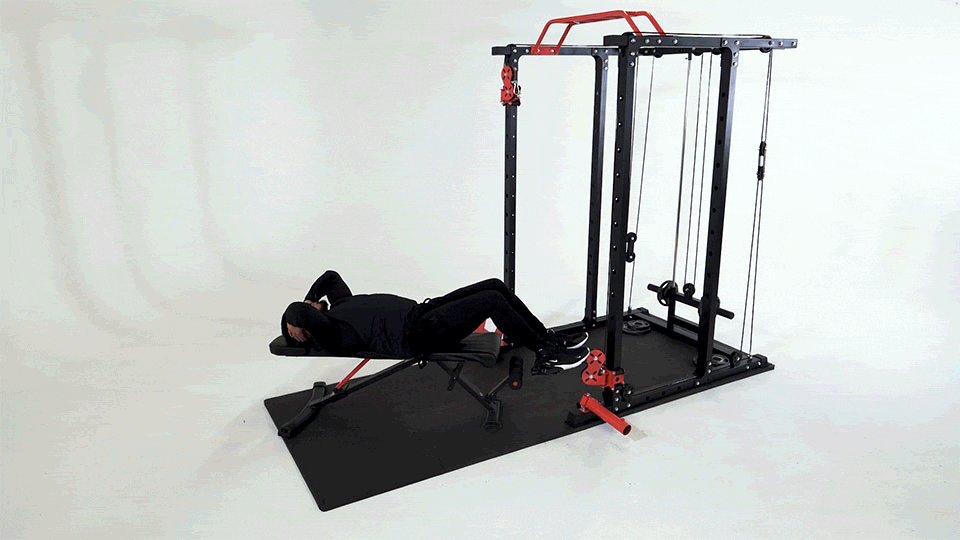
- Attach ankle straps to a low pulley. Lie on your back and connect your ankles.
- Curl your knees toward your chest using your lower abs.
- Return slowly.
Benefits:
- Hits hard-to-reach lower abs
- Promotes pelvic control
Also Read: 10 Powerfull Kettlebell Oblique Exercises for a Ripped Waistline
5. Cable Seated Twist
How to:
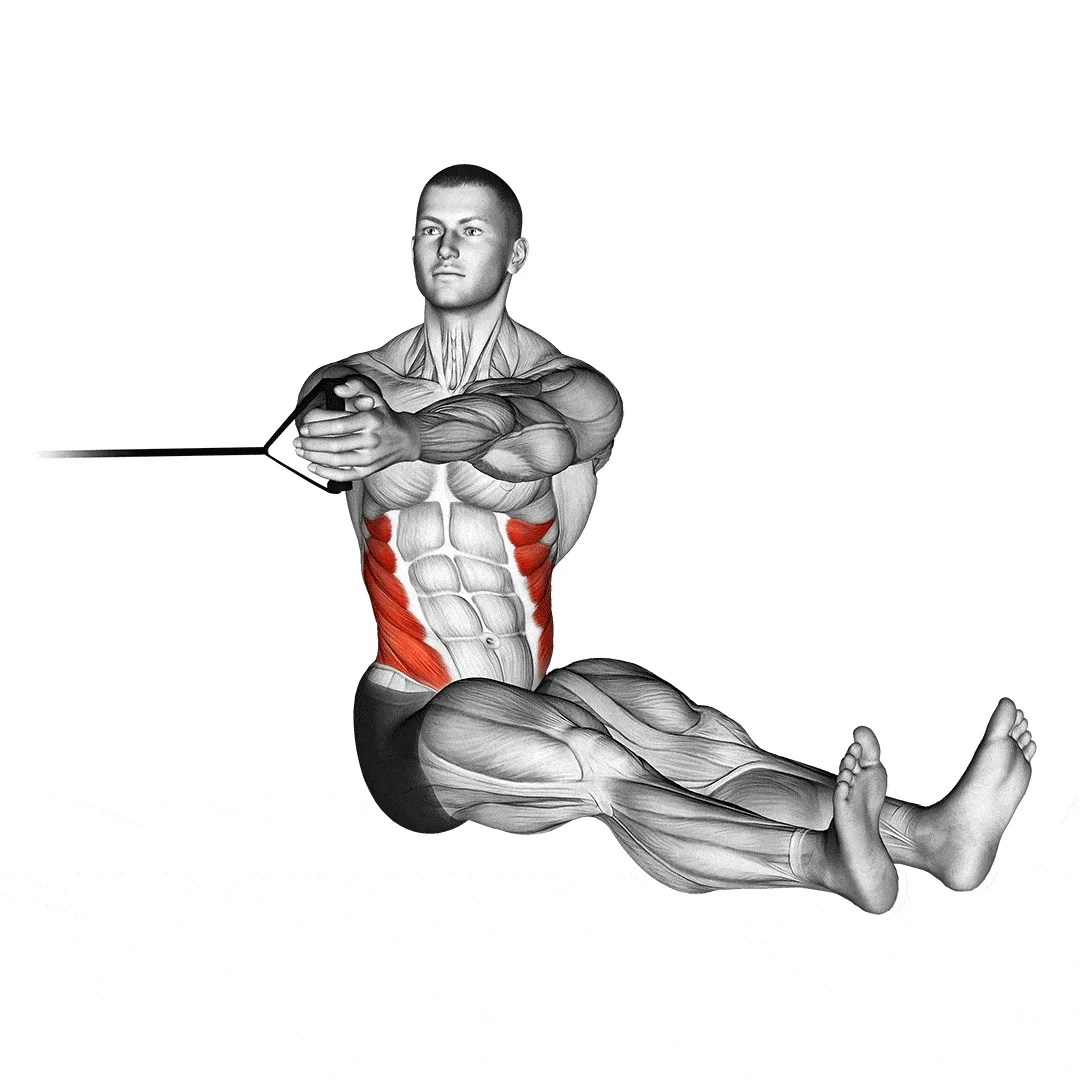
- Sit with legs extended, cable at chest height.
- Rotate your torso side-to-side holding the handle.
- Keep spine tall.
Benefits:
- Works internal/external obliques
- Improves spinal mobility
6. Cable Dead Bug (Low Pulley)
How to:

- Lie on back, knees bent, cable handles in each hand from low pulley.
- Extend opposite arm and leg slowly, then return.
- Alternate sides.
Benefits:
- Builds deep core stability
- Enhances coordination
7. High Cable Side Bend
How to:
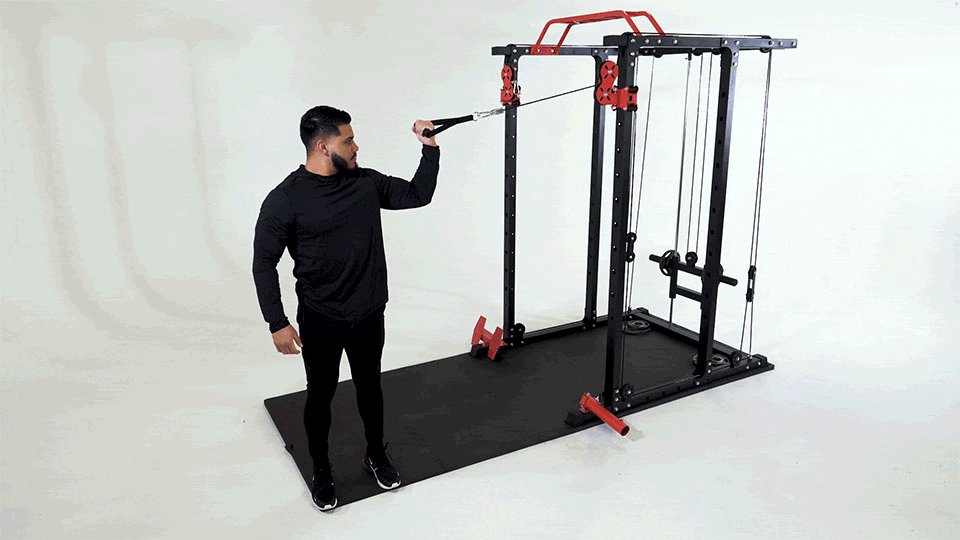
- Stand side-on with the cable set high.
- Bend sideways toward the floor, stretching obliques.
- Return up.
Benefits:
- Strengthens and lengthens side core
- Aesthetic side taper
Also Read: 10 Best Kettlebell Exercises for Bigger, Stronger Biceps
8. Cable Rope Slam Crunch
How to:

- Use rope at high pulley.
- Slam your torso down like a wave, crunching hard.
- Return with control.
Benefits:
- Full-ab engagement with explosive power
- Great finisher
9. Cable Lying Leg Raise (Low Pulley)
How to:
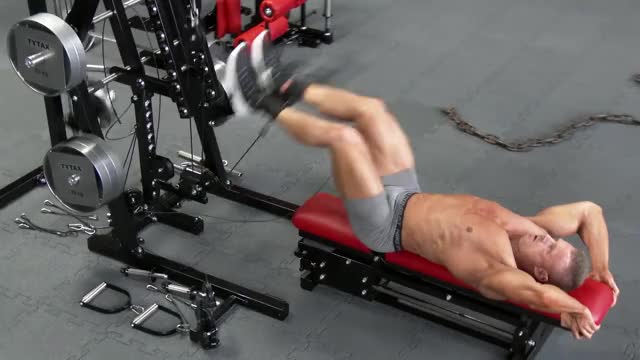
- Attach ankle straps to low pulley.
- Lie flat, raise legs up 90° using core.
- Lower under control.
Benefits:
- Focuses on lower abs
- Improves core-lower limb synergy
10. Cable Bicycle Crunch (Low Pulley)
How to:
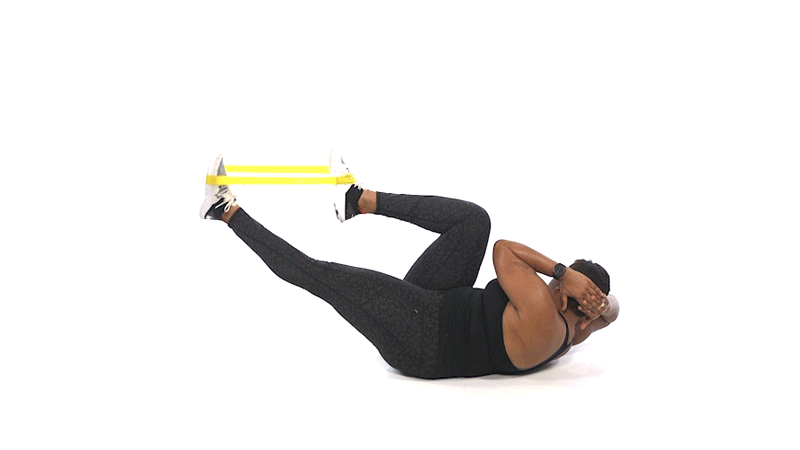
- Lie on back, ankle straps connected to low pulley.
- Alternate legs in bicycle motion while hands touch opposite knees.
- Keep tension throughout.
Benefits:
- Total core activation
- Boosts coordination
Also Read: 11 Kettlebell Chest Workouts That Ignite Strength & Size
11. Half-Kneeling Cable Chop
How to:
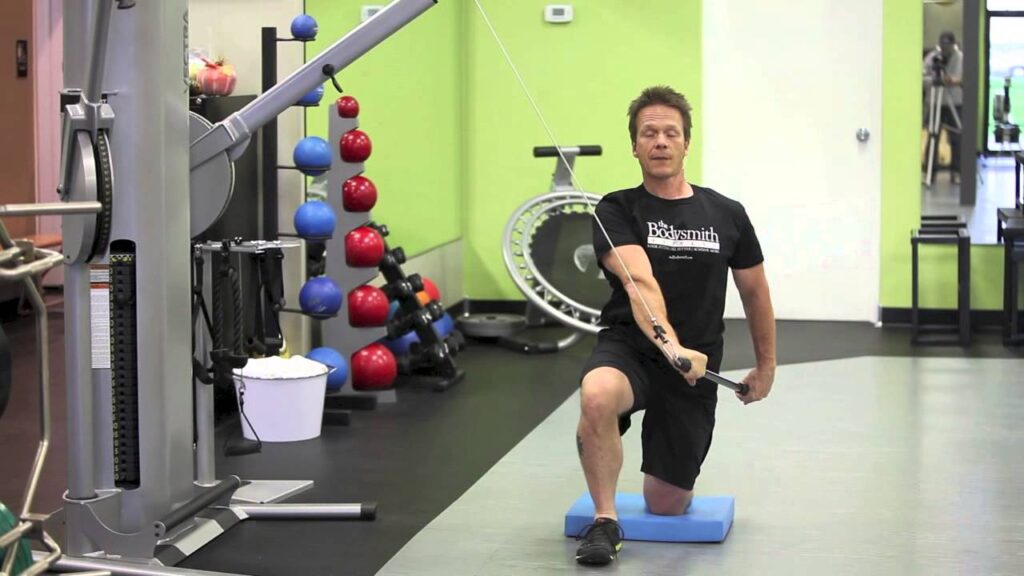
- Kneel on one knee, high pulley cable in hands.
- Chop down diagonally to opposite hip.
- Engage core throughout.
Benefits:
- Builds anti-rotational strength
- Targets deep core
12. Standing Anti-Rotation Press (Pallof Press)
How to:
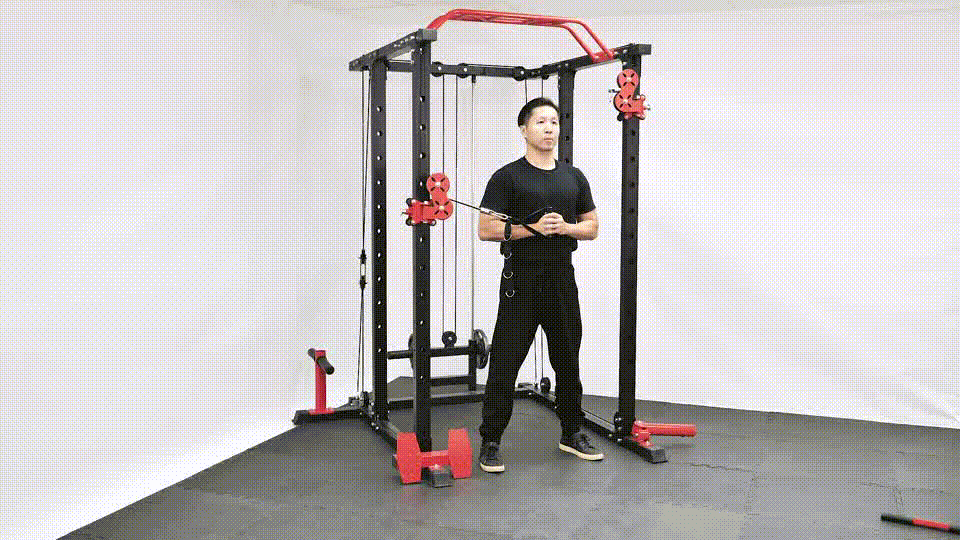
- Set cable at chest height.
- Stand sideways and press cable out in front.
- Resist rotation.
Benefits:
- Stabilizes spine
- Fantastic for posture & injury prevention
✅ Interesting Fact: Anti-rotation work like Pallof Press is often used in rehab settings for back pain!
13. Cable Russian Twist (Low Pulley)
How to:
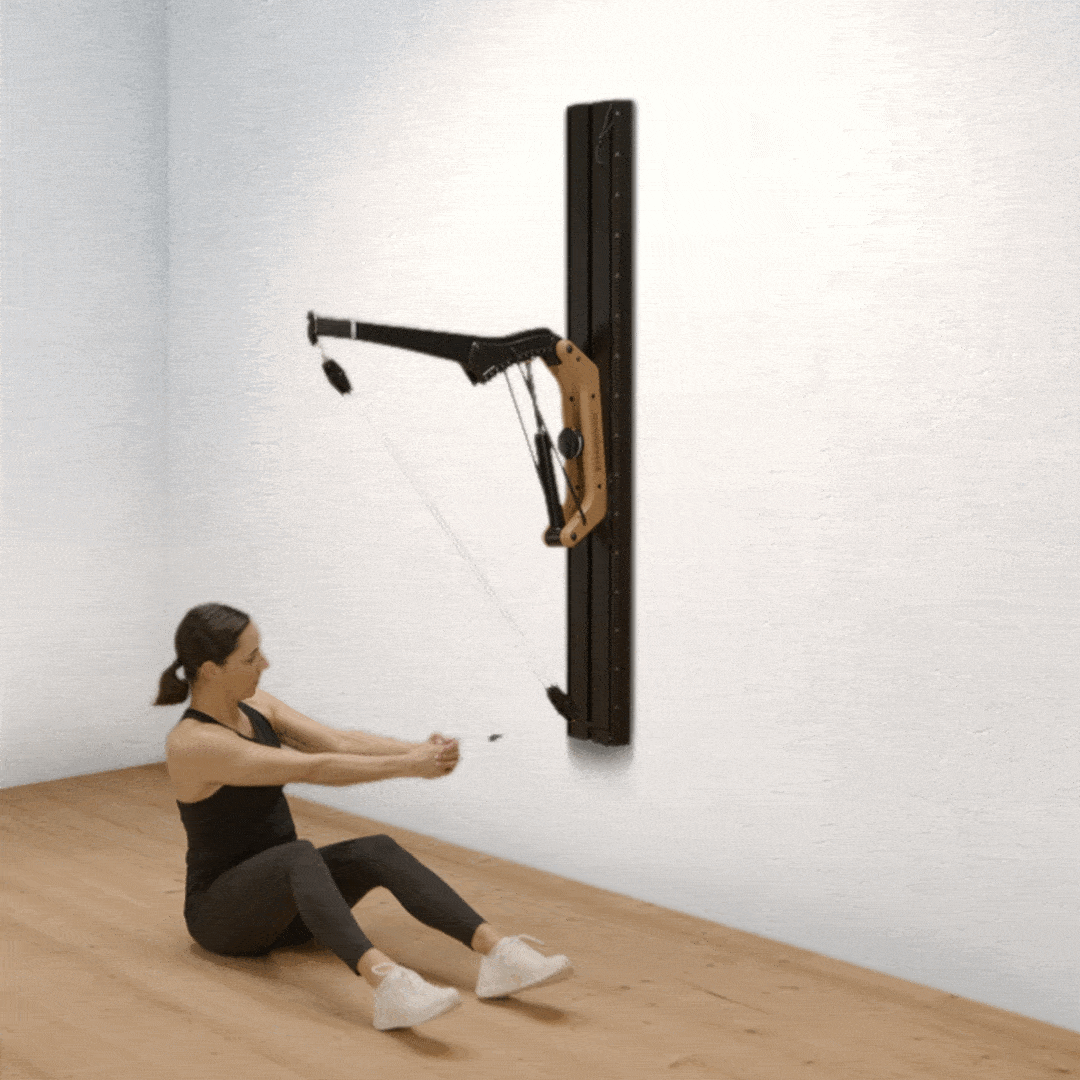
- Sit on the floor, hold cable handle with both hands.
- Rotate torso side to side with control.
- Keep core tight.
Benefits:
- Builds powerful twisting motion
- Burns through obliques
Also Read: 10 Barbell Hamstring Exercises That Build Muscle & Mobility
14. Cable Standing Crunch With Rope
How to:
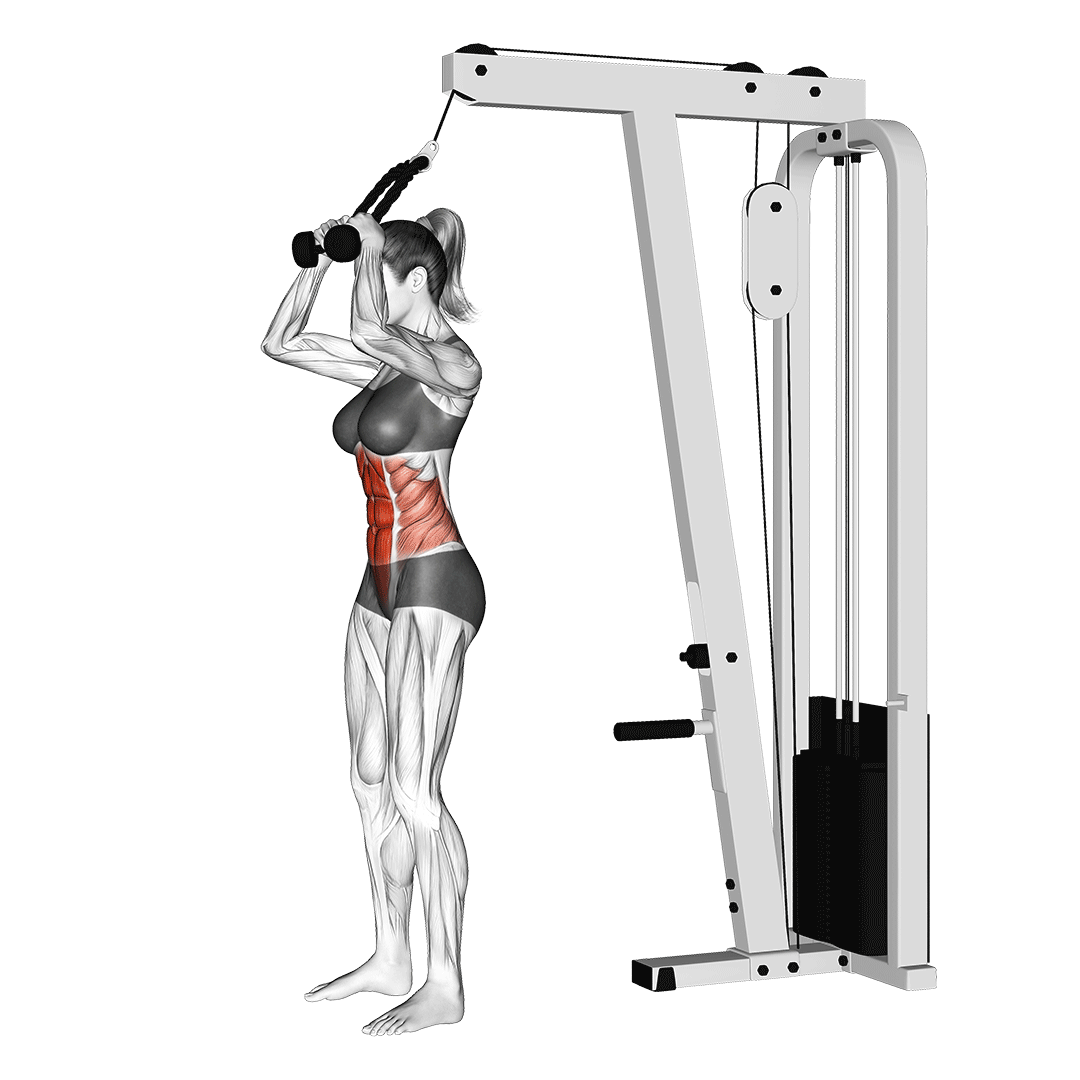
- Use high pulley with rope.
- Stand tall, then crunch forward.
- Engage abs—not arms.
Benefits:
- Greater range of motion
- Constant resistance for deeper burn
15. Cable Plank Row (Low Pulley)
How to:
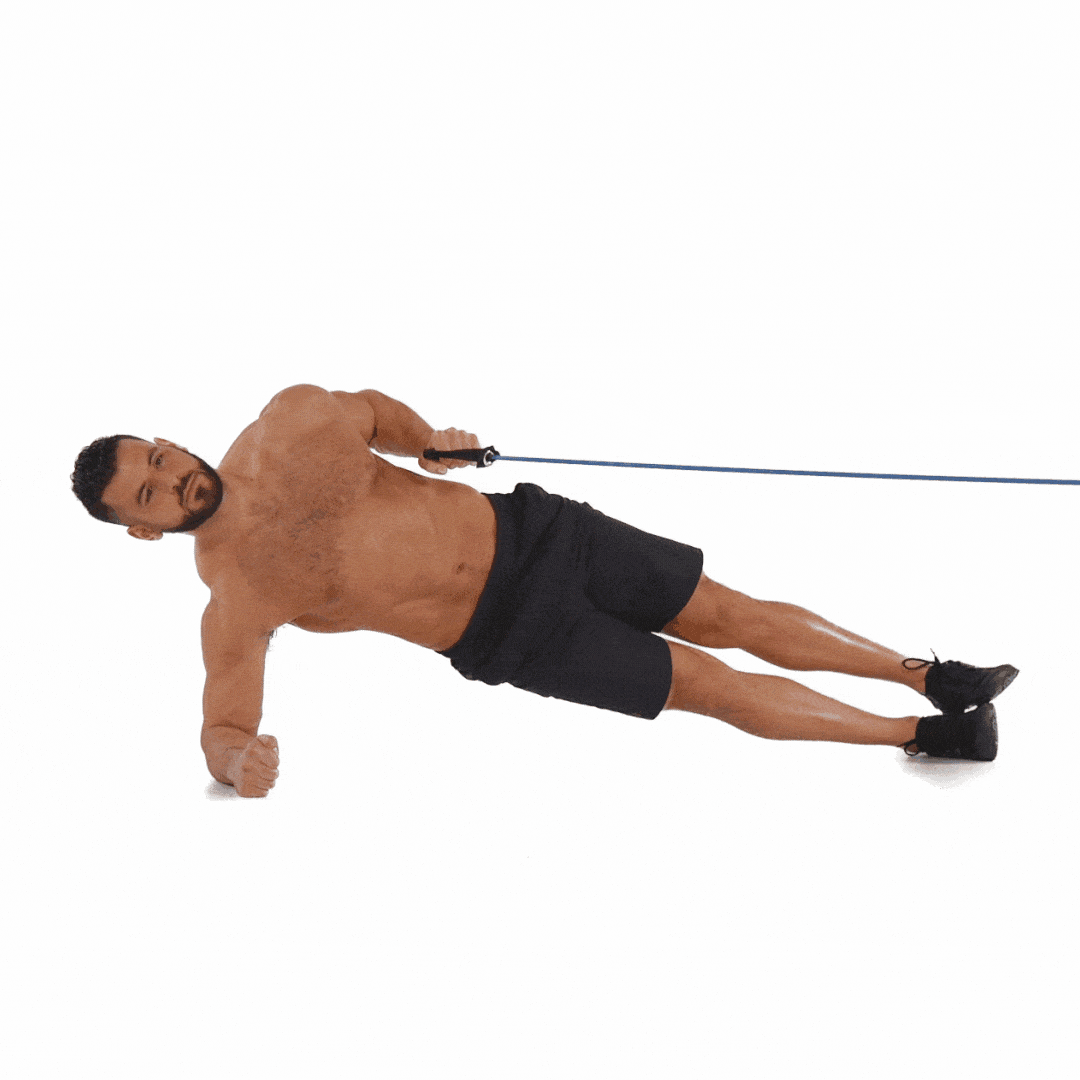
- Set in a forearm plank, low cable handle in one hand.
- Pull elbow back while holding plank.
- Alternate arms.
Benefits:
- Builds anti-extension and anti-rotation
- Torches deep core stabilizers
Key Tips for Best Results
- Focus on slow, controlled form
- Breathe out during the contraction phase
- Use moderate weight to ensure ab isolation (don’t let other muscles take over)
Also Read: 10 Barbell Oblique Exercises That Carve Your Waist Like a Pro
Final Thoughts
Hi-Lo Cable Abs Exercises are not just for aesthetics—they’re for real-world core function. From improving posture and lifting power to bulletproofing your spine, these 15 movements go far beyond six-pack training.
Ready to carve out your core?
Add 3–5 of these into your weekly rotation and feel the difference in power, posture, and performance.
Frequently Asked Questions (FAQs)
What are Hi-Lo Cable Abs Exercises?
These are core-targeted exercises performed using a cable machine set at either a high (above the head) or low (near the ground) pulley position. The constant tension allows for effective resistance training that engages the entire abdominal region, including upper abs, lower abs, and obliques.
Can I do these exercises if I’m a beginner?
Absolutely. Start with a lighter weight and focus on proper form. Beginner-friendly options include Kneeling Cable Crunch, Standing Oblique Crunch, and Pallof Press. Avoid fast or explosive movements until your core is more conditioned.
How many cable ab exercises should I do per session?
Aim for 3 to 5 exercises per session, 2–3 times a week. Focus on different angles (high to low, side-to-side, anti-rotation) to target all areas of your core effectively.
Are cable ab workouts better than bodyweight core exercises?
Not necessarily “better,” but more progressive. Cable workouts allow you to add resistance and change the direction of tension, offering more variety and challenge than traditional bodyweight-only routines.
Can cable ab exercises help me get visible abs faster?
They’ll help build and define your abdominal muscles. However, visible abs also depend on body fat levels, which are best reduced through a combination of consistent training, proper nutrition, and cardio.
How do I avoid using my arms too much in these exercises?
Focus on initiating the movement from your core, not your limbs. For example, in cable crunches, don’t pull with your arms—instead, round your spine and let your abs contract to move the weight.
Can I do these exercises at home?
If you have a home cable machine, definitely! You can replicate most gym-based Hi-Lo cable exercises. If not, consider using resistance bands with anchor points as an alternative.


